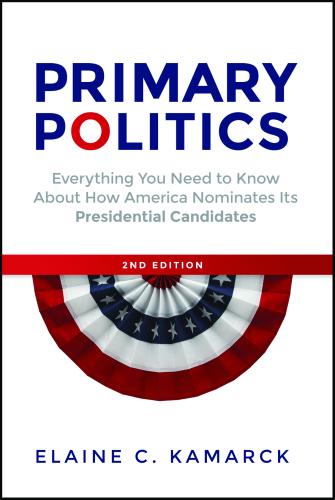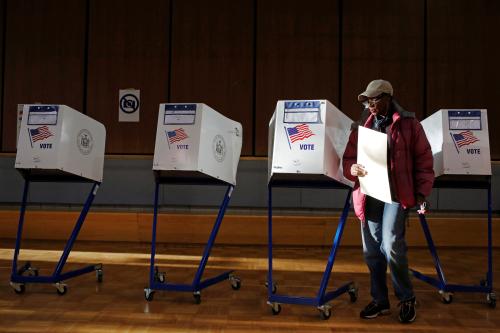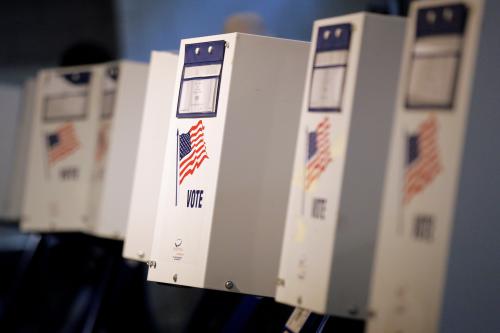This primary season has now come to a close amidst a great deal of breathless conversation about how the Democratic Party is being pulled left because of victories in primaries by the Bernie Sanders wing of the party. It is a good story; after all, if the Democrats become the mirror image of the Republican Party and develop their own extreme faction within the next Congress, politics could get really wild. The Republican Party could propose one of their favorite ideas: abolishing the IRS (Internal Revenue Service). This is a clueless proposal which would leave the government with no means to raise money even to pay for the parts of government, like the military, that the right wing likes. The Democratic Party could debate abolishing ICE (Immigration and Customs Enforcement), an idea that has gained popularity in left-wing campaigns this year. This is an equally clueless proposal which would leave no one at the border to separate terrorists and criminals from those with legitimate reasons to come to the United States. Republicans have a particular stake in promoting the story of the progressive takeover of the Democratic Party—the crazier the Democrats look, the less attention gets paid to the extremes in the Republican coalition.
Unfortunately, none of the conventional wisdom is true.
For every stunning progressive upset—such as the victories of Ayanna Pressley in her Massachusetts congressional primary or Andrew Gillum in the Florida gubernatorial primary—there are victories of more conventional Democratic candidates. Gov. Andrew Cuomo easily won his re-nomination in New York, and likewise Sen. Tom Carper (DE), handily beat Our Revolution-endorsed Kerri Harris in Delaware’s U.S. Senate primary.
Here at the Primaries Project we have been paying special attention to congressional primaries in both parties with an eye towards putting some numbers behind the week-to-week frenzy over who’s up and who’s down. Now that the primaries are over we can take a comprehensive look at everyone who ran in this year’s contests and see how they did. This blog will focus on the Democrats.
As the following table reports, self-identified progressive Democrats did well. A total of 101 progressive Democrats won their primaries, which was just under 3 in 10 of all progressives. However, establishment candidates fared somewhat better. A total of 139 won their primaries, with better than 1 in 3 establishment candidates winning the Democratic nomination.
| House Non-Incumbent Democrats | ||||
|---|---|---|---|---|
| Win | Lose | |||
| Progressive Democrats |
101 (27.3%) |
269 (72.7%) |
||
| Establishment Democrats |
139 (34.9%) |
259 (65.1%) |
||
Source: The Primaries Project at Brookings (Kamarck and Podkul). Notes: Row percentages reported in parentheses. Chart does not include races that have not been called (MA-3). Chart does not include candidates coded as “Moderate Democrats” (n = 25) or “Other.” (n = 96)
Does this mean that come 2019, the Democratic House will have a large number of left-wingers? Not necessarily.
To answer this question we divided the primary winners by the kind of district they would be running in, using the PVI Index developed by Charlie Cook to indicate how Republican or Democratic the district is. This allows us to predict something about the make-up of the Democratic Caucus in the House come 2019. For instance, the much-heralded victories of Ayanna Pressley in Massachusetts and Alexandria Ocasio-Cortez in New York will make the Democratic caucus look different but it probably will not make it vote differently since they both replace very liberal white male congressmen. (However, this change in representation could influence the caucus’s agenda.)
The following side-by-side charts show the two groups of primary winners by the PVI of the districts they will compete in in November. Democratic non-incumbents have the best chance of winning in districts that are Democrat-leaning or Even. Focusing on the slightly Republican districts (Even to R+10), there are more Establishment candidates than Progressive candidates. When looking at the more solid Republican districts (greater than R+10), however, there is a relatively large number of progressive nominees. In these districts, it may be more difficult for any Democrat to win—unless the blue wave turns into a blue tsunami.

What all of this means depends on the time frame. For the immediate future, it means the Democratic caucus is unlikely to be pulled substantially to the left. Progressive Democrats have an uphill battle in solid Republican districts this November. Even if there is a blue tsunami, we can likely assume a rising tide would lift all boats, meaning Progressives will be elected alongside their Establishment peers. The best-case scenario for Progressives in the short term is that they become a minority within a highly populated Democratic caucus.
Looking beyond the 116th Congress, however, if the new progressive activists and first-time candidates stay involved, it could presage a more liberal Democratic Party. But trying to gauge the ideological voice of a party without a presidential election is tough. By 2020, the presence of a leftward tilt among the Democrats may come into clearer focus.
The Brookings Institution is committed to quality, independence, and impact.
We are supported by a diverse array of funders. In line with our values and policies, each Brookings publication represents the sole views of its author(s).









Commentary
What’s happening to the Democratic Party?
September 14, 2018